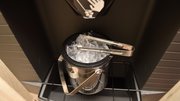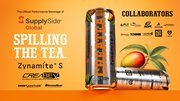Blog
Green Prices Stabilize But Brewed Coffee Misinformation Abounds
May 14, 2015 | Kevin Daw
TAGS: Vending Times columnist, vending, office coffee service, OCS editorial, coffee industry, coffee market, coffee roasting, Heritage Coffee, Kevin Daw, K-Cup, Debarati Roy, Marvin G. Perez, Cooxupe, coffee exporter, Gillian Rutherford, Pacific Investment Management Co. |
The coffee market has found the new range I mentioned in the January issue; prices have settled in the mid to low $1s. Solid rainfall reports from Brazil and the continued strength of the U.S. dollar have both helped to keep the market at a reasonable level. Brazilian growing regions were stressed last year by drought-like conditions, but the past few months saw the rains come back in full force. This has alleviated the situation and increased production forecasts. Further helping the price decline is the fact that coffee, as a commodity, is traded in U.S. dollars. Brazil represents the largest portion of coffee cultivation among exporters, and when the Brazilian real drops in value against the U.S. dollar, Brazilian growers do not feel the effects of a declining coffee futures market as fully, and so are willing to trade at lower levels.
There is still a risk that major commodity funds will lock onto some new bit of news that will convince them to once again open large "long" positions and so drive up the market. This statement was recently published by Bloomberg News in an article by Debarati Roy and Marvin G. Perez:
"As recently as January, dryness was still plaguing growing regions. Cooxupe, the nation's top coffee exporter and grower cooperative, cut its outlook for its members' production this season by 14% because plants were losing leaves. 'The latest decline in prices is because of the recent uptick in rain, but the issue is that the stress to the plants has already happened,' Gillian Rutherford, who helps oversee $20 billion as a commodities portfolio manager at Pacific Investment Management Co. in Newport Beach, CA, said by telephone Feb. 26."
Statements like that can prompt traders to decide there might be some remaining "meat on the bone," and if enough of them reverse course and begin to buy, it could once again be deuces wild. Barring that, we will hopefully enjoy a calmer year in the market.
Last month, The Atlantic (March 2, 2015) released an article that quoted the inventor of the K-Cup as stating that he "feels bad sometimes that I ever did it" regarding the creation of the K-Cup.
The article is quite long, and an interesting read, especially for our industry members; but as with almost every coffee-related article I read, I found myself infuriated by the misinformation that abounds in its contents. There is not room enough here for all the mistakes in the piece, but I will cover a couple.
As a company that produces actual coffee pods I take umbrage when I see K-Cups referred to as "pods." They are cartridges, not pods. I think at some point, in an effort to confuse consumers, the term "pod" was bestowed on the cartridges. We get calls on our pod ads from those looking for K-Cups. It is a costly exercise to redirect consumers misled by a misnomer.
One other glaring point made that sounded far from correct is that the K-Cup is more efficient in extraction than drip brewing. "The 11g. of grounds in a K-Cup are utilized more efficiently than when I throw a handful of ground coffee into my Melitta filter in the morning," stated Murray Carpenter, a journalist who first spoke out about the environmental concerns over the waste the cups represent.
Aside from the debate over which Melitta device he uses, the coarseness of the grind, the brew temperature, and all the variables that are needed to even make a statement like that, it is safe to assume that using any regular drip grind, in any conventional brewer, is easily as efficient as a cartridge, when comparing finished cups of equal strength.
Eleven grams of ground coffee per K-Cup brewed with 7 fluid ounces of water equates to using a 99g. portion of coffee for 63 fluid ounces. of water. Ninety-nine grams of coffee equals roughly 3.5 ounces of roast ground coffee. No offense to anyone who loves the taste of K-Cups, but 3.5 ounces of drip-grind coffee in a 63-fl.oz. pot would usually qualify for a Gold Cup award from the Specialty Coffee Association of America. The comparison is not even close; and as efficient grounds use goes, drip coffee wins by a long shot. Quite a bit of space was dedicated for this defense of K-Cup use. That this premise was not fact-checked and was published in a prestigious magazine such as The Atlantic is further proof that we as an industry have much educating of the public left to do.
As always, may your cup be full and the brew exquisite!
 KEVIN DAW is president of Heritage Coffee Co. (London, ON, Canada), a private-label roaster serving the breaktime management industries. A 30-year veteran of OCS, water delivery and vending operations, he has concentrated on coffee roasting for the past two decades.
KEVIN DAW is president of Heritage Coffee Co. (London, ON, Canada), a private-label roaster serving the breaktime management industries. A 30-year veteran of OCS, water delivery and vending operations, he has concentrated on coffee roasting for the past two decades.






